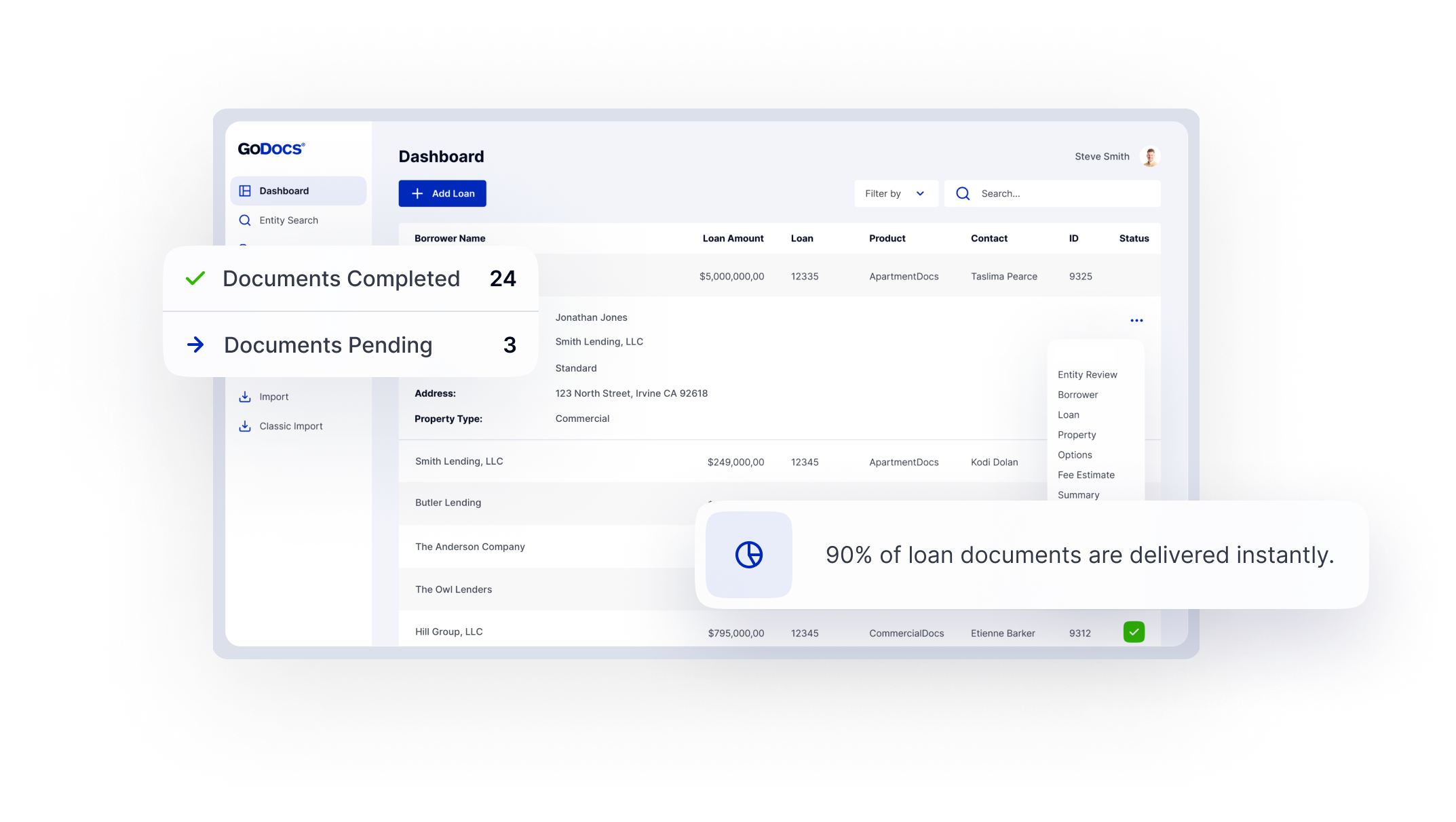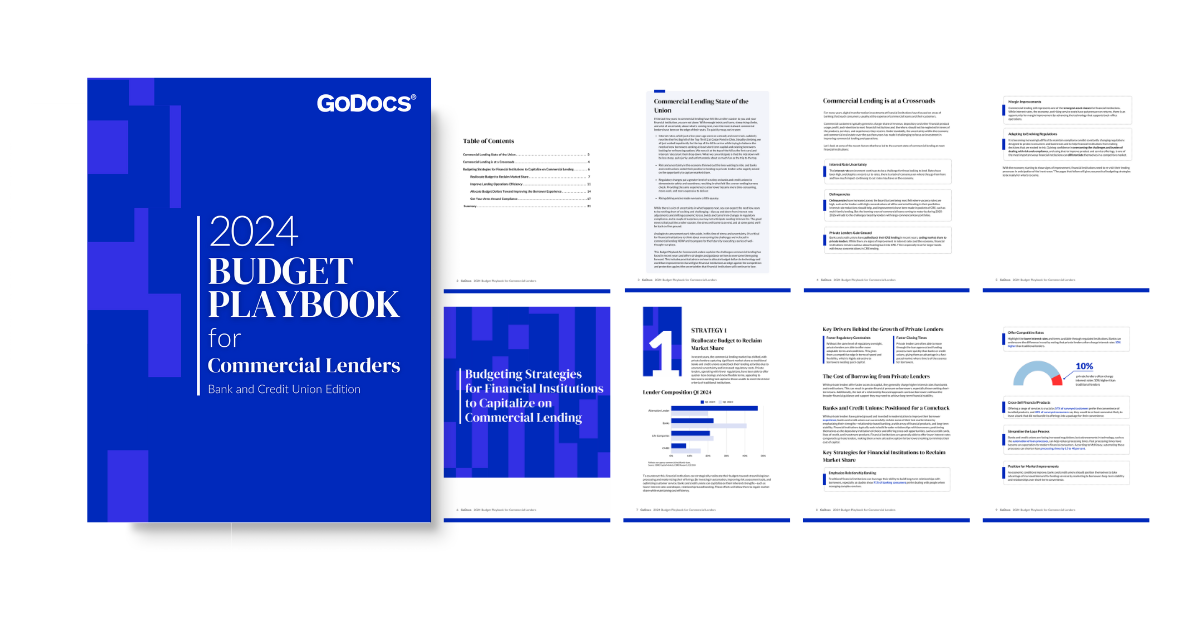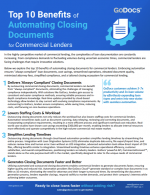Overview of Commercial Lending Market Trends
The Mortgage Bankers Association (MBA) forecasts a rise in commercial and multifamily mortgage borrowing and lending, projecting an increase to $576 billion in 2024, a notable 29% jump from 2023. This shift counters a recent lull in the sector, which MBA’s Jamie Woodwell notes as the slowest in a decade. Particularly, multifamily lending is anticipated to grow to $339 billion in 2024, a 25% rise, with expectations of total commercial real estate lending reaching $717 billion by 2025.
The Influence of Economic Factors
The forecast highlights the correlation between property prices and mortgage originations, with current market slowdowns partly attributed to uncertainties in interest rate trends. A potential decrease in these rates could invigorate the market, whereas sustained high rates may dampen activities.
Based on the MBA forecast data, let’s explore how digital transformation in commercial lending can drive competitive advantages and shape the significant rise in commercial and multifamily mortgage borrowing and lending.
Digital Transformation in Commercial Lending:
Securing a Competitive Advantage
The shift in lending necessitates a shift towards digitalization, offering a competitive edge through:
- Enhanced Borrower Experience: Digital solutions streamline the lending process, improving user experience and positioning lenders as industry leaders.
- Comprehensive Lifecycle Management: Digital platforms transform the lending cycle, covering stages from application to closing, post-closing, and ongoing maintenance, including crucial aspects like loan modifications.
- Improved Borrower Qualification: Utilizing data analytics, digital tools offer more accurate assessments of borrower qualifications.
- Streamlining Loan Documentation: The integration of automation in loan documentation, as exemplified by solutions like GoDocs, significantly accelerates processing and markedly speeds up the time to close. This advancement minimizes errors, eliminates attorney costs, and ensures 50-state compliance. This enhancement in loan documentation not only improves loan quality but also heightens borrower satisfaction, demonstrating how advanced digital tools are reshaping the lending landscape.
- Cost Savings for Borrowers: The efficiencies from digital solutions can translate into lower fees and savings for borrowers.
- Creating a Profit Center through Automation: The significant cost savings realized through automation, particularly in the closing process, enable lenders to transform cost centers into profit centers. By reducing operational expenses and streamlining workflows, lenders can redirect resources toward growth and innovation, thereby enhancing profitability in a competitive market.
This shift towards digital proficiency is not merely about keeping pace, it’s about setting the pace. By embracing these digital innovations, lenders are not just streamlining their processes but are also carving out a significant competitive advantage.
Top 10 Benefits of Automating Closing Documents for Commercial Lenders
First-gen automated commercial loan document solutions fall short in meeting loan requirements. Get the benefits.
Addressing Delinquency Rates with Digital Solutions
The report acknowledges rising delinquency rates in commercial property-backed mortgages, emphasizing the need for effective digital loan modification strategies. Tools like GoDocs ModDocs™ facilitate rapid, accurate, and cost-effective modifications, offering a proactive approach to maintaining healthy loan portfolios.
Impact of Workplace Dynamics on Commercial Lending
Changing workplace dynamics, especially the trend towards in-person operations, are reshaping the commercial office space sector. A Resume Builder survey indicates that 90% of companies plan to return to office spaces by 2024, with 72% reporting positive revenue impacts from this shift. This reflects the evolving nature of commercial and multifamily mortgage markets, shaped by economic factors, work patterns, and market uncertainties.
Embracing Digital Transformation for Future-Ready Commercial Lending
The projected growth in the commercial and multifamily mortgage markets underscores the importance of digital transformation. It is not just a goal but a necessity, central to achieving success and gaining a competitive edge. The strategic integration of digital tools, from enhancing borrower experiences to streamlining loan documentation, is pivotal. This evolution, marked by solutions like GoDocs, is vital for lenders to adapt, innovate, and lead in a digitally driven market.
Experience the Future of Commercial Loan Document Automation
Discover GoDocs, the leading SaaS solution powered by the sharpest legal minds in CRE! Schedule a demo today to elevate your lending process and to gain your competitive advantage.
Gain a Competitive Edge with GoDocs
To maintain or gain the competitive edge and strive to be #1 in the lending industry, commercial lenders must continually adapt and evolve. Embracing next-generation technologies and solutions becomes imperative, and that includes harnessing the power of the loan document automation ecosystem offered by GoDocs. By leveraging GoDocs’ cutting-edge automation tools, private lenders can streamline their loan document processes, improve efficiency, reduce errors, reduce resources, and enhance operations to handle any loan type, any loan size, and any loan volume while mitigating risk automatically.

How Banks and Credit Unions Can Prepare for the Coming SBA Loan Surge
Small business lending is poised for an upswing. With renewed federal backing, shifting economic conditions, and a surge in entrepreneurial activity, SBA loans, especially 7(a)

When Others Shelter, It’s Your Time to Lead
In Uncertain Times, Precision and Intentional Action Set Top Lenders Apart When the market feels uncertain, many commercial lenders instinctively pull back. They pause loan

How Should Lenders Approach Loan Modifications in 2025?
Commercial Loan Modifications Are Coming in 2025: Here’s How Financial Institutions Should Prepare If your institution isn’t already reviewing its loan portfolio for loans that




